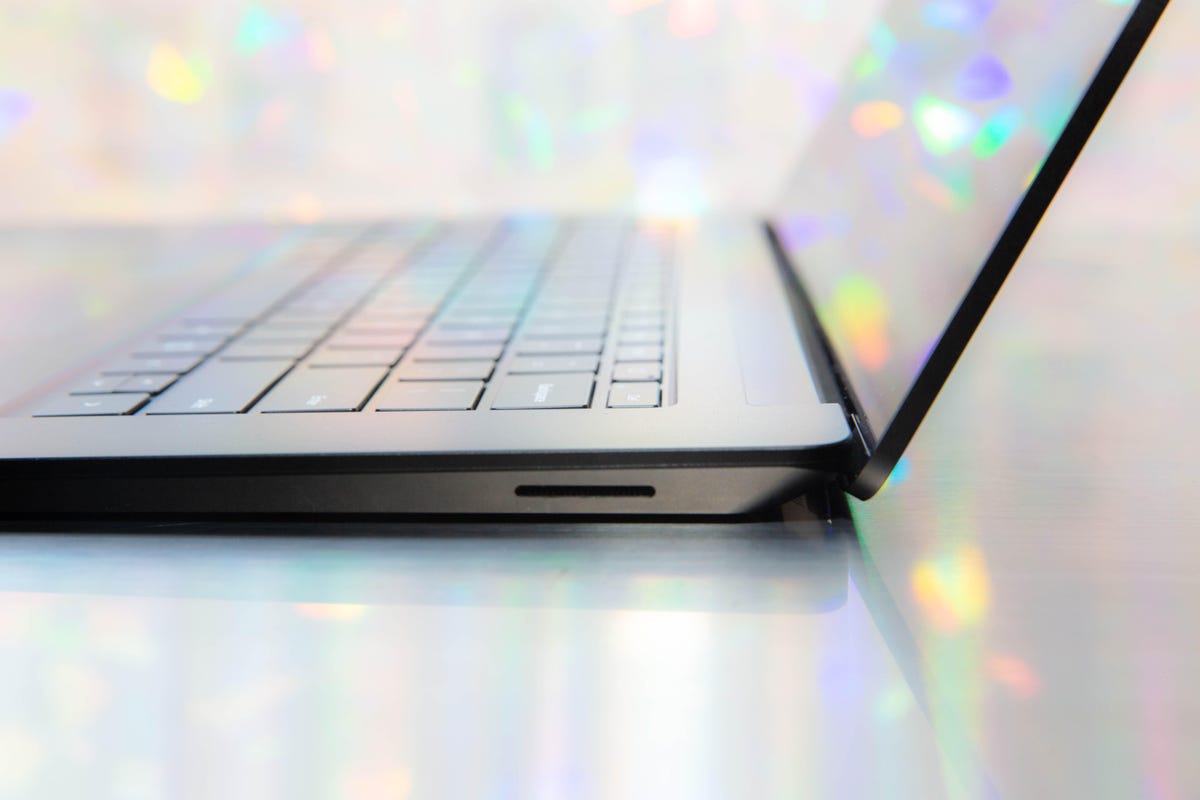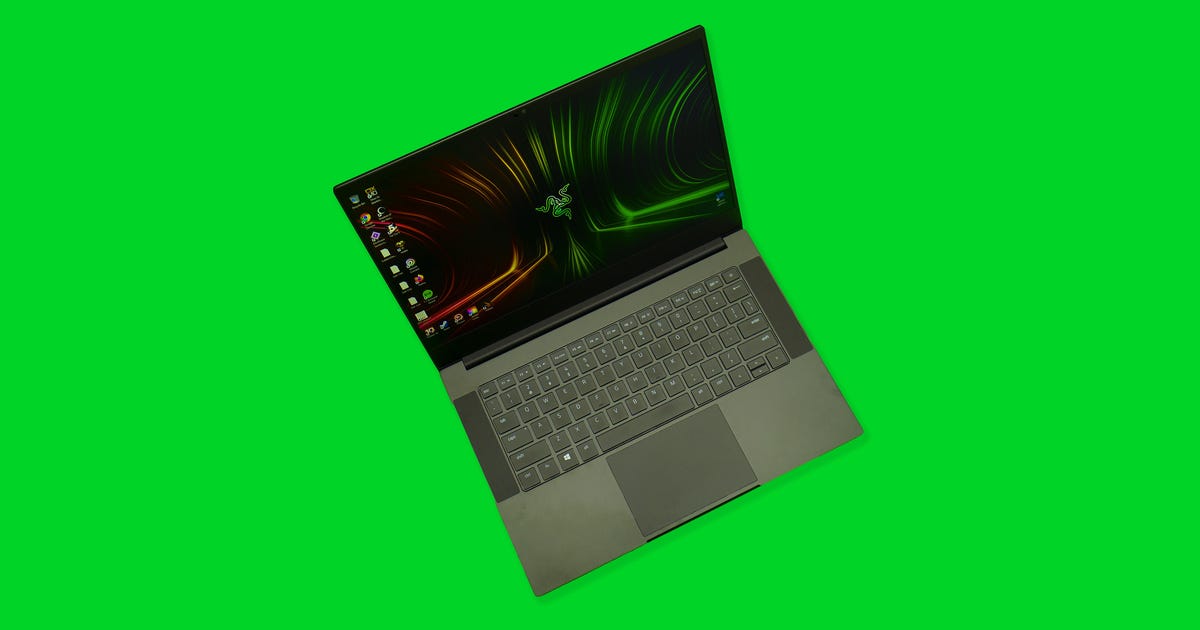
Asus ZenBook S UX391UA review: A more comfortable premium ultraportable
The Asus ZenBook S UX391U looks every bit the part of a premium ultraportable. Clad in deep blue or burgundy metal with rose gold edges, the 13.3-inch laptop is only 13mm thick (0.51 inch) and 2.4 pounds (1.1 kg). It's the right size if you spend more time working in tight spaces such as coffee shops and airport lounges than at a desk.
Open it up and you'll notice the key design feature that separates it from most of the others in this category: The lid's hinge lifts the back of the keyboard up for a more comfortable typing angle. It also helps keep your legs and the laptop's eighth-gen Intel Core i7 processor from getting too hot. This isn't the first time this design's been done -- HP's latest 13-inch Envy laptop has a similar feature -- but it's still a cool touch.
The current configuration in the US is priced at $1,499 and includes a 4K UHD-resolution touchscreen, 16GB of memory and a 512GB SSD. In the UK, you'll currently find it with a Core i5 or i7, but with half the memory and storage, for £1,199 or £1,299, and in Australia it'll set you back AU$2,699 with a Core i7, 16GB of memory and a 256GB SSD.
Asus ZenBook S UX391UA
| Price as reviewed | $1,499 |
|---|---|
| Display size/resolution | 13.3-inch, 3,840x2,160-pixel touchscreen |
| CPU | 1.8GHz Intel Core i7-8550U |
| Memory | 16GB DDR3 SDRAM 2,133MHz |
| Graphics | 128MB (shared) Intel UHD Graphics 620 |
| Storage | 512GB PCIe SSD |
| Networking | 802.11ac wireless, Bluetooth 4.2 |
| Operating system | Windows 10 Professional (64-bit) |
Those prices are competitive for the category, but models such as Dell's XPS 13, HP's Spectre and Acer's 14-inch Swift 7 offer designs that potentially make them better choices depending on your needs. Even Asus' own ZenBook 13 might be a better choice because of its discrete graphics.
Rising above the competition
The biggest hurdle for the ZenBook S is that it has plenty of competition including from its stablemates at Asus, and with its ErgoLift hinge as the main design feature, it's not an easy recommendation. The Dell XPS 13, for example, is the world's smallest 13.3-inch laptop, comes in multiple configurations starting at less than $1,000 and is just a generally excellent laptop. The same goes for the HP Spectre, which along with being thin and light, has a unique privacy screen feature to give you more peace of mind while working in public. Then there's the regular 13-inch Asus ZenBook that looks similar -- minus the ErgoLift hinge -- but is less expensive and has better graphics performance.
The hinge is definitely nice to have because, combined with the excellent backlit keyboard, it does make typing more comfortable. Also, since the bottom hit 120 degrees Fahrenheit (49 Celcius) under load in my testing, it keeps the heat up off your lap and allows for better air circulation.
There are other things to like about the ZenBook S's design, too. There's a glass Windows Precision touchpad that's smooth and responsive, and has a built-in fingerprint sensor for Windows Hello sign-ins. Far-field mics let you use Cortana and eventually Amazon Alexa from up to 4 meters (13 feet) away. And it meets MIL-STD 810G military standard for reliability and durability. This doesn't mean you should go tossing it around, but it is built with durability in mind. The body does collect fingerprints like crazy, though, and it is hard to get them off completely.
The 4K UHD-resolution touchscreen is bright with good color performance and it's surrounded by thin bezels to make it look more elegant. As for ports, all you'll find are three USB-C ports and a headphone and mic jack. Two of the USB-C ports are Thunderbolt 3, however, and Asus includes adapters for HDMI output and a USB-A port as well as a padded laptop sleeve.
Ready to run
This laptop will keep up with your average on-the-go business needs. The ZenBook S's eighth-gen quad-core Intel Core i7 processor, 16GB of memory, 512GB PCIe SSD and integrated graphics didn't disappoint. I zipped through everyday activities such as streaming videos and music while running Google Chrome with a dozen or more tabs open.
With its integrated graphics, you're not going to be doing demanding video or photo edits. Anything more than casual gaming won't be fun. Still, if you need to cut up clips or crop an image for a PowerPoint presentation, you'll be fine. On our benchmark tests, it was on par with its competition.
That hinge.
Where the ZenBook S lagged a little was on battery life. On our video streaming test it ran for 8 hours, 26 minutes, which isn't a bad run considering the size of the laptop and its 4K touchscreen. But if you're looking for all-day battery life, you probably won't get there from here with this configuration. On the bright side, the USB-C port can quick charge to 60 percent in less than an hour.
Executive decision
All in all, Asus put together a strong premium ultrabook with the ZenBook S UX391U. It isn't quite the standout as other ZenBooks we've reviewed this year, and there are a lot of equally good or better options that might better suit your needs or style. Still, if you're looking for a little laptop that'll get noticed when you take out at a cafe, an airport lounge or conference room, this should do the trick.
Geekbench 4 (multicore)
Cinebench R15 CPU (multicore)
Video playback battery drain test (streaming)
System configurations
| Asus ZenBook S UX391U | Microsoft Windows 10 Pro (64-bit); 1.8GHz Intel Core i7-8550U; 16GB DDR3 SDRAM 2,133MHz; 128MB dedicated Intel UHD Graphics 620; 512GB SSD |
|---|---|
| Acer Swift 7 | Microsoft Windows 10 Home (64-bit); 1.3GHz Intel Core i7-7Y75; 8GB DDR3 SDRAM 1,866MHz; 128MB dedicated Intel HD Graphics 615; 256GB SSD |
| LG Gram 15 | Microsoft Windows 10 Home (64-bit); 1.8GHz Intel Core i7-8550U; 16GB DDR4 SDRAM 2,133MHz; 128MB dedicated Intel HD Grpahics 620; (2) 512GB SSD |
| Dell XPS 13 9370 (i7) | Microsoft Windows 10 Home (64-bit); 1.8GHz Intel Core i7-8550U; 16GB DDR3 SDRAM 2,133MHz; 128MB (dedicated) Intel UHD Graphics 620; 512GB SSD |
| HP Spectre 13 (2017) | Microsoft Windows 10 Home (64-bit); 1.8GHz Intel Core i7-8550U; 8GB DDR4 SDRAM 2,133MHz; 128MB (dedicated) Intel HD Graphics 620; 256GB SSD |
| Microsoft Surface Laptop | Microsoft Windows 10 Pro (64-bit); 2.5GHz Intel Core i5-7200U; 8GB DDR3 SDRAM 1866MHz; 128MB (dedicated) Intel HD Graphics 620; 256GB SSD |
Source






